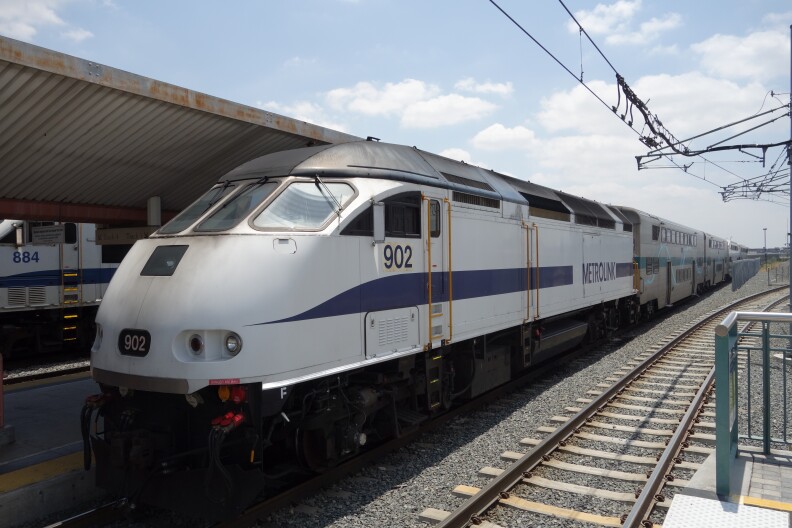They are two sides of the same coin of Los Angeles public transportation.
The locomotives of Metrolink, which connect Union Station in Los Angeles to Orange and Riverside County:

And the light trains of Metro Rail, which run through the urban areas in and around downtown L.A.:

Metro Rail will soon begin its latest project: An expansion for the Gold Line from its current endpoint at Azusa Pacific University to Montclair.
The problem is that those planned Metro stops are close to existing Metrolink stops. This overlapping of the two systems has happened before. And it's caused Metrolink ridership to drop as people switched over use Metro instead.
"Metro Rail is going to be cheaper; it's going to have more frequent service. So that's the main driver for someone wanting to Metro Rail over Metrolink," expert Ethan Elkind told Take Two's A Martinez. Elkind is the author of Railtown: The Fight for the Los Angeles Metro Rail and the future of City.
While they are similar, Elkind says that LA's two rail services are meant to serve two different types of commutes.
"Metrolink is really designed as a commuter system. It runs during those peak commute hours; It doesn’t have frequent service; it’s a little more expensive. Metro Rail … is really meant for high-density areas; for frequent travel among some areas with high-rise type buildings or at least moderate density where you have a lot of jobs and housing and people needing to get around."



